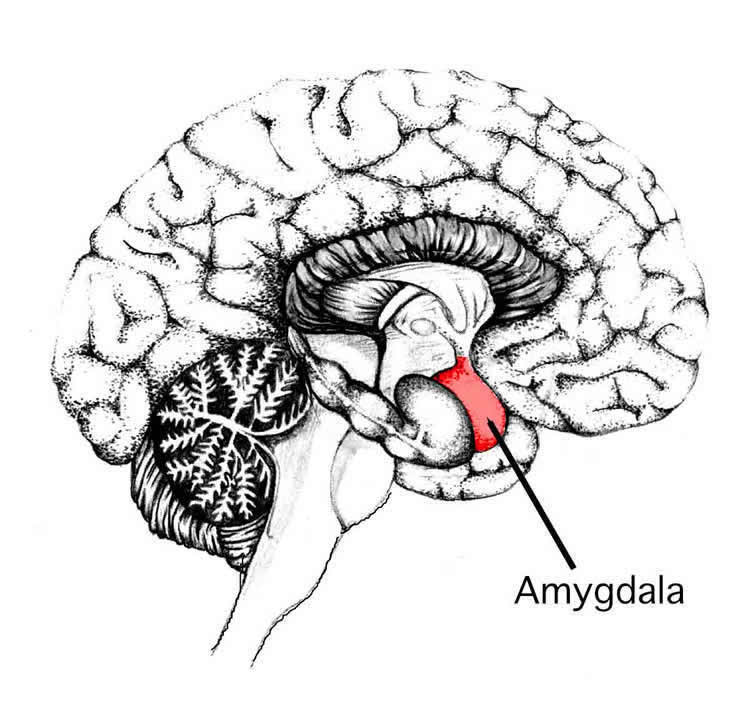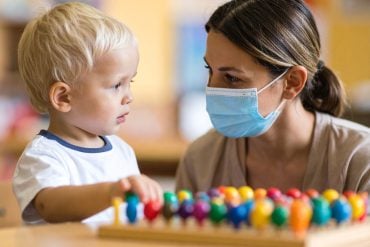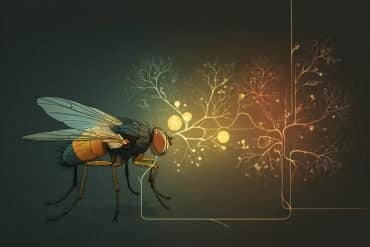Summary: University of Queensland researchers report they have discovered evidence of neurogenesis in the amygdala. Researchers say their findings could help develop new avenues of treatment for fear processing disorders.
Source: University of Queensland.
A University of Queensland discovery may lead to new treatments for anxiety, depression and post-traumatic stress disorder (PTSD). UQ Queensland Brain Institute scientists have discovered that new brain cells are produced in the adult amygdala, a region of the brain important for processing emotional memories.
Disrupted connections in the amygdala, an ancient part of the brain, are linked to anxiety disorders such as PTSD.
Queensland Brain Institute director Professor Pankaj Sah said the research marked a major shift in understanding the brain’s ability to adapt and regenerate.
“While it was previously known that new neurons are produced in the adult brain, excitingly this is the first time that new cells have been discovered in the amygdala,” Professor Sah said.
“Our discovery has enormous implications for understanding the amygdala’s role in regulating fear and fearful memories.”
Researcher Dr Dhanisha Jhaveri said the amygdala played a key role in fear learning — the process by which we associate a stimulus with a frightening event.
“Fear learning leads to the classic flight or fight response — increased heart rate, dry mouth, sweaty palms — but the amygdala also plays a role in producing feelings of dread and despair, in the case of phobias or PTSD, for example,” Dr Jhaveri said.

“Finding ways of stimulating the production of new brain cells in the amygdala could give us new avenues for treating disorders of fear processing, which include anxiety, PTSD and depression.”
Previously new brain cells in adults were only known to be produced in the hippocampus, a brain region important for spatial learning and memory.
The discovery of that process, called neurogenesis, was made by Queensland Brain Institute founding director Professor Perry Bartlett, who was also involved in the latest research.
“Professor Bartlett’s discovery overturned the belief at the time that the adult brain was fixed and unable to change,” Professor Sah said. “We have now found stem cells in the amygdala in adult mice, which suggests that neurogenesis occurs in both the hippocampus and the amygdala. “The discovery deepens our understanding of brain plasticity and provides the framework for understanding the functional contribution of new neurons in the amygdala,” Professor Sah said.
Source: Andrea Markey – University of Queensland
Image Source: NeuroscienceNews.com image is in the public domain.
Original Research: Full open access research for “Evidence for newly generated interneurons in the basolateral amygdala of adult mice” by D J Jhaveri, A Tedoldi, S Hunt, R Sullivan, N R Watts, J M Power, P F Bartlett & P Sah in Molecular Psychiatry. Published online August 15 2017 doi:10.1038/mp.2017.134
[cbtabs][cbtab title=”MLA”]University of Queensland “Adult Brains Produce New Cells in Previously Undiscovered Area.” NeuroscienceNews. NeuroscienceNews, 15 August 2017.
<https://neurosciencenews.com/neurogenesis-ptsd-amygdala-7304/>.[/cbtab][cbtab title=”APA”]University of Queensland (2017, August 15). Adult Brains Produce New Cells in Previously Undiscovered Area. NeuroscienceNew. Retrieved August 15, 2017 from https://neurosciencenews.com/neurogenesis-ptsd-amygdala-7304/[/cbtab][cbtab title=”Chicago”]University of Queensland “Adult Brains Produce New Cells in Previously Undiscovered Area.” https://neurosciencenews.com/neurogenesis-ptsd-amygdala-7304/ (accessed August 15, 2017).[/cbtab][/cbtabs]
Abstract
Evidence for newly generated interneurons in the basolateral amygdala of adult mice
New neurons are continually generated from the resident populations of precursor cells in selective niches of the adult mammalian brain such as the hippocampal dentate gyrus and the olfactory bulb. However, whether such cells are present in the adult amygdala, and their neurogenic capacity, is not known. Using the neurosphere assay, we demonstrate that a small number of precursor cells, the majority of which express Achaete-scute complex homolog 1 (Ascl1), are present in the basolateral amygdala (BLA) of the adult mouse. Using neuron-specific Thy1-YFP transgenic mice, we show that YFP+ cells in BLA-derived neurospheres have a neuronal morphology, co-express the neuronal marker βIII-tubulin, and generate action potentials, confirming their neuronal phenotype. In vivo, we demonstrate the presence of newly generated BrdU-labeled cells in the adult BLA, and show that a proportion of these cells co-express the immature neuronal marker doublecortin (DCX). Furthermore, we reveal that a significant proportion of GFP+ neurons (~23%) in the BLA are newly generated (BrdU+) in DCX-GFP mice, and using whole-cell recordings in acute slices we demonstrate that the GFP+ cells display electrophysiological properties that are characteristic of interneurons. Using retrovirus-GFP labeling as well as the Ascl1CreERT2 mouse line, we further confirm that the precursor cells within the BLA give rise to mature and functional interneurons that persist in the BLA for at least 8 weeks after their birth. Contextual fear conditioning has no effect on the number of neurospheres or BrdU-labeled cells in the BLA, but produces an increase in hippocampal cell proliferation. These results demonstrate that neurogenic precursor cells are present in the adult BLA, and generate functional interneurons, but also show that their activity is not regulated by an amygdala-dependent learning paradigm.
“Evidence for newly generated interneurons in the basolateral amygdala of adult mice” by D J Jhaveri, A Tedoldi, S Hunt, R Sullivan, N R Watts, J M Power, P F Bartlett & P Sah in Molecular Psychiatry. Published online August 15 2017 doi:10.1038/mp.2017.134






